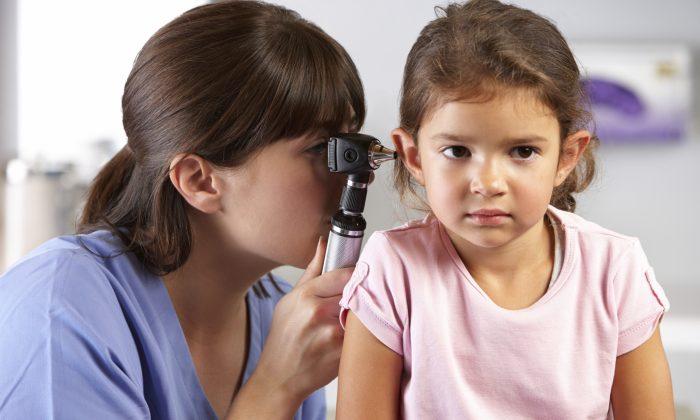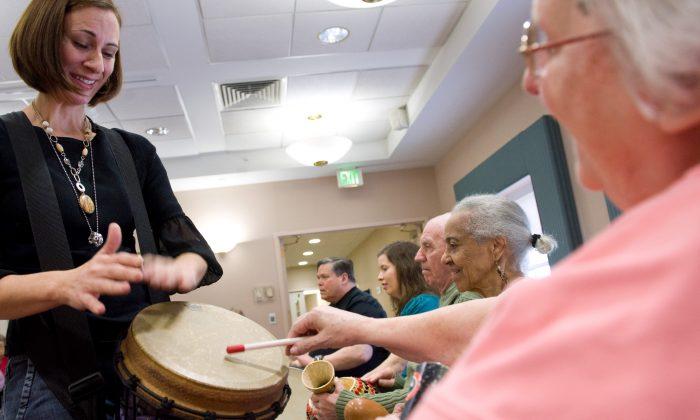The birth of Prince George on July 22 has brought attention to all aspects of childhood, whether it be the joys of early parenthood or the excitement felt by grandparents and great-grandparents at the news of an addition to the family.
The Royal Baby also drew attention to newborn health care, shining a light on the fact the United Kingdom is a leader in childhood health, including hearing tests.
The U.K.’s National Health Service (NHS) offers hearing screenings within the first few weeks of life, which identifies those babies who will need follow-up care. The NHS reports that of every 1,000 babies born, one or two will have hearing loss in one or both ears.
Hearing loss is an issue throughout childhood, though, as recent studies have shown. The Journal of Pediatrics notes that the increase in earphone use has led to a spike in hearing loss among children between the ages of 6 and 19. The publication says 12.5 percent of children in that demographic have developed hearing loss because they use earphones with the volume turned up too high.
Other factors that play a role in the rise in hearing loss among children include loud urban environments, head trauma through physical sports, and excessive noise from video games, movies, and other media.
With this being back-to-school season, I thought I would list five things parents could do to protect their children’s hearing for this school year and beyond.
1. Turn down the music
As mentioned above, loud music (and loud media, in general) is eroding children’s hearing at earlier and earlier ages. Parents must monitor the volume and should limit the use of earbud headphones. Noise-dampening headphones are both fashionable and less damaging to hearing. Although they are pricey, they are worth the investment.
2. Play music with caution
Band practice—whether it be at school or after school with friends—is one of the most popular extra-curricular activities for kids. Keeping music enjoyable for years to come means using the same precautions when playing drums and guitars as when listening to music on a personal MP3 player.
Give your kids earplugs and show them examples of all the many musicians who wear ear protection both to protect their hearing and to fine-tune their musicianship.
3. Practice good ear health
Ear infections are the most common reason parents will bring their child to a doctor, according to the U.S. Department of Health and Human Services. One reason is that the Eustachian tubes in children are much smaller than they are in adults, meaning it is harder for fluid to drain out and more likely for infection to occur.
Proper, routine cleaning of the ears is crucial for maintaining hearing health. It’s important not to attempt to clean the inside of a child’s ears with cotton swabs. This can be damaging to the eardrum. Instead, wash the outside of the ears with a warm washcloth, cleaning around the ear canal. Regular bathing and nightly cleaning of the ears is important to maintaining healthy ears.
If your child complains about pain in the ears, consult your family physician, who can check to see if there is excessive buildup of earwax or an infection.
4. Wear the right equipment for sports
Helmet use isn’t only for contact sports. Kids who bike ride, rollerblade, or skateboard are at risk of increased head trauma if they don’t wear proper protection.
In many jurisdictions in North America, helmet use is required when riding a bike, but that’s not the case with other activities where falls routinely occur. Hitting the pavement hard is one of the learning lessons of childhood, but simple precautions like wearing a helmet can reduce the chances of permanent damage to brain function, including hearing.
5. Get their hearing tested
Children can receive free hearing health tests through their physicians and public medical clinics in Canada and many parts of the United States. These tests can identify noise-induced hearing loss as well as recommend treatment to keep the problem from worsening.
Back to school not only means shopping for fashionable clothes and school supplies, it also means a return to healthy routines including early bedtimes and planning nutritious bagged lunches.
To those activities, parents should add hearing-health precautions for their children. A few easy-to-follow tips can help ensure they stay connected to the sounds and people they love.
MJ DeSousa, an audiologist and Director of Professional Practice at Connect Hearing, leads a team of hearing professionals across Canada. For more information about hearing health please visit www.connecthearing.ca




